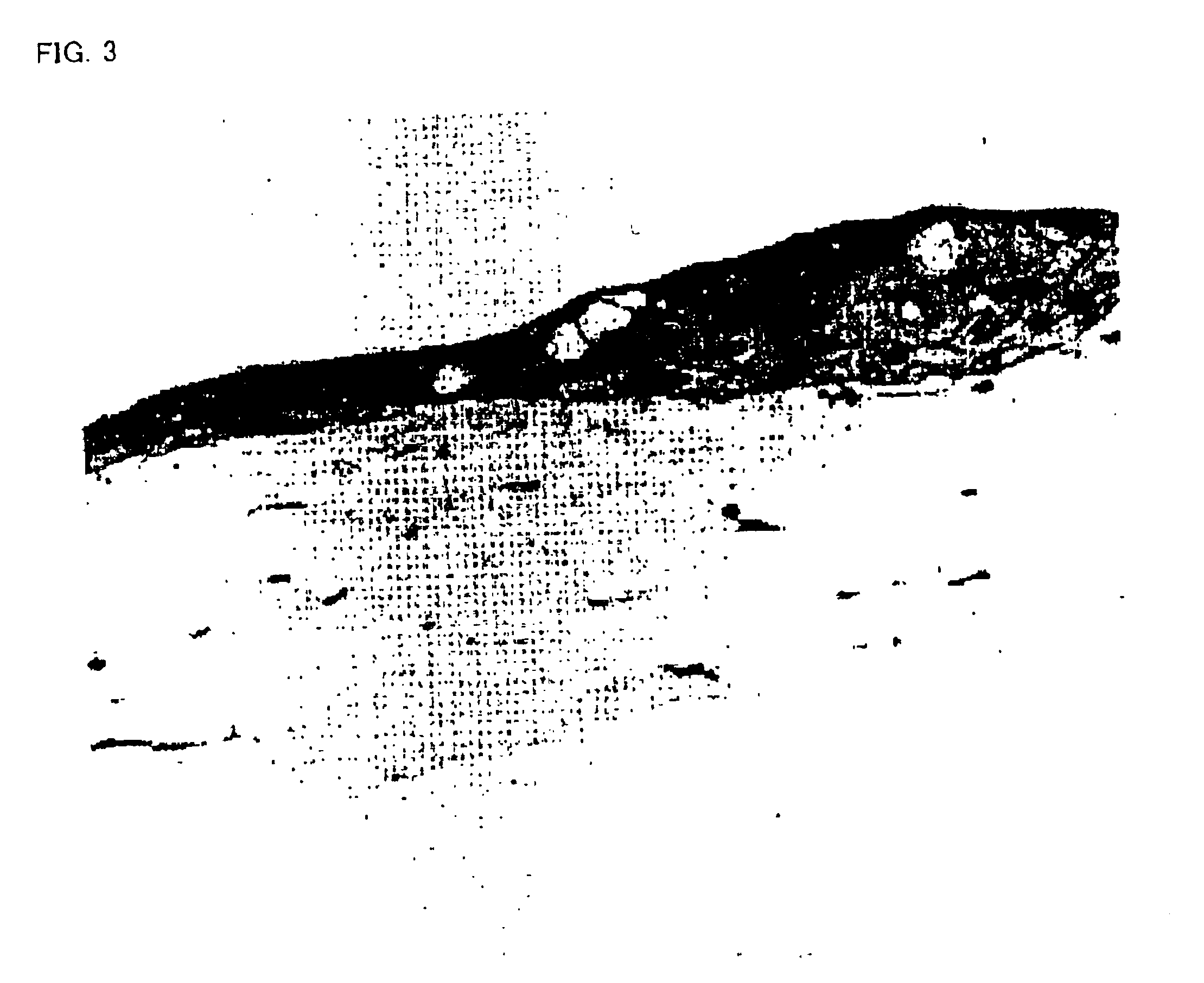Cultured skin and method of manufacturing the same
a skin and culture technology, applied in the field of cultured skin, can solve the problems of many unsolved problems in the art, short cell division lifetime, and low differential plasticity capacity, and achieve the effect of high successful grafting ra
- Summary
- Abstract
- Description
- Claims
- Application Information
AI Technical Summary
Benefits of technology
Problems solved by technology
Method used
Image
Examples
example 1
Separation and Culture of Umbilical Epithelium Cells
[0074]An umbilical cord (30-60 cm in length, 9-15 mm in diameter) removed after birth was sufficiently washed three times with HBSS (Hanks' balanced salt solution) or PBS (Phosphate-Buffered Saline solution) to remove adherent blood. Then, both ends of the umbilical cord were tied with strings, respectively, followed by dipping the umbilical cord into a solution prepared by diluting a proteolytic enzyme “dispase”(manufactured by BECTON DICKINSON) with a medium (MCDB153-1 / 4 medium) having the following composition such that the concentration of the enzyme becomes 20% in the solution. In this case, the umbilical cord was hung by strings and was then dipped into the solution, while both ends (2 cm each) of the umbilical cord were not dipped in the solution, followed by leaving the umbilical cord as it is for 25 to 50 hours at 4° C.[0075]Medium: MCDB153-1 / 4 Medium (a medium prepared by mixing MCDB153 medium and DMEM (incl., 0-10% FBS) ...
example 2
Separation and Culture of Umbilical Myofibroblasts
[0081]In Example 1, after separating the umbilical epithelium cells, blood vessels were removed from the remaining umbilical tissue using a scalpel and a pair of tweezers. Then, the umbilical tissue after the removal of blood vessels was cut into pieces of about 5 mm square using a scalpel and a pair of tweezers. Small pieces were rested in the culture dish, while the DMEM medium (incl. 10% FCS) was poured into the culture dish such that one surface of the small piece was dipped in the medium.
[0082]After one week past, it was observed that umbilical myofibroblasts were generated around the tissue piece, followed by the addition of about 5 ml of the DMEM medium (incl. 10% FCS) such that the umbilical tissue was sufficiently submerged.
[0083]After that, the sufficient growth of umbilical myofibroblasts was allowed and then the umbilical tissue was removed. Consequently, umbilical myofibroblasts (about 106 cells) were collected using a s...
example 3
Proliferation of Separated and Cultured Umbilical Epithelium Cells
[0085]Umbilical epithelium cells separated in the same way as that of Example 1 were cultured using the following three kinds of media (A, B, C), respectively.
[0086]MCDB153-1 / 4(0% cx-FCS, 0% FCS) medium . . . (A)
[0087]Keratinocyte-SFM medium (GIBCO) . . . (B)
[0088]Defined Keratinocyte-SFM medium (GIBCO) . . . (C)
[0089]A subculture of the umbilical epithelium cells was prepared by collecting the cells using a solution of 0.1% trypsin and 0.1 mM EDTA in a state where the cells had became sub-confluent. The number of cells was counted, followed by inoculating the cells into a culture vessel with a volume three times higher than that of the prior vessel (the volume is the same as in Example 1).
[0090]The growth curve of the resultant cells is shown in FIG. 1.
PUM
| Property | Measurement | Unit |
|---|---|---|
| humidity | aaaaa | aaaaa |
| humidity | aaaaa | aaaaa |
| thickness | aaaaa | aaaaa |
Abstract
Description
Claims
Application Information
 Login to View More
Login to View More - R&D
- Intellectual Property
- Life Sciences
- Materials
- Tech Scout
- Unparalleled Data Quality
- Higher Quality Content
- 60% Fewer Hallucinations
Browse by: Latest US Patents, China's latest patents, Technical Efficacy Thesaurus, Application Domain, Technology Topic, Popular Technical Reports.
© 2025 PatSnap. All rights reserved.Legal|Privacy policy|Modern Slavery Act Transparency Statement|Sitemap|About US| Contact US: help@patsnap.com



